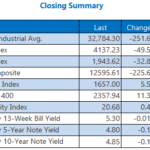Bitcoin (BTC) gained about 40% in January, its best finish in the first month of the year since 2013. The sharp rally caused a change in sentiment and the futures markets which saw backwardation in November and December started trading at a healthy contango in January, according to Glassnode.
Coming out of a bear market low, a rally driven by the leaders rather than the laggards is a sign that the bottoming process may have begun. The rise in Bitcoin’s dominance from about 38% in November to above 42% in January is an indication that smart investors may have started accumulating Bitcoin at lower levels.

Could Bitcoin and altcoins stay range-bound and consolidate the gains or will traders book profits, dragging prices lower? Let’s study the charts of the top-10 cryptocurrencies to find out.
BTC/USDT
Bitcoin dipped below the breakout level of $22,800 on Jan. 30 but the bulls purchased at lower levels and pushed the price back above $23,000 on Jan. 31.

A strong rebound off the current level or the 20-day EMA could again launch the pair toward the overhead resistance of $24,000.
A break and close below the 20-day EMA could be the first sign that the bulls may be rushing to the exit. There is a minor support at $21,480 but if that gives in, the pair could retest the psychologically critical level of $20,000.
ETH/USDT
Ether (ETH) turned up from the 20-day EMA ($1,546) on Jan. 31 but the rebound lacks strength. This suggests a lack of aggressive buying by the bulls.

If bulls want to maintain their dominance, they will have to fiercely defend the 20-day EMA and catapult the price above $1,680. If they do that, the pair could rise to $1,800 and eventually to $2,000.
BNB/USDT
BNB (BNB) formed an inside-day candlestick pattern on Jan. 31, indicating indecision among the bulls and the bears.

On the upside, the bulls will have to overcome the stiff barrier at $318 to gain the upper hand. There is no major resistance between $318 and $360, hence the pair may cover this distance in a short time.
XRP/USDT
XRP (XRP) plummeted below the 20-day EMA ($0.40) on Jan. 30 but the bears could not sustain the lower levels. This suggests that the bulls are buying on dips.

If buyers want to gain the upper hand, they will have to kick the price above the overhead resistance. The pair could then pick up pace and soar to $0.51 and thereafter to $0.55.
ADA/USDT
Cardano (ADA) turned up from the 20-day EMA ($0.36) on Jan. 31 but the bulls could not overcome the barrier at $0.40. This suggests that the bulls may be tiring out.

The 20-day EMA has not been breached since Jan. 4, hence, the bulls will make every attempt to defend it. If the price turns up from the 20-day EMA and breaks above $0.40, it will indicate that the up-move may continue for some more time. The pair could then rally to $0.44.
DOGE/USDT
Dogecoin (DOGE) pierced the $0.09 resistance and soared near $0.10 on Jan. 31. This is a positive sign but the bears are in no mood to surrender. The sellers yanked the price to $0.09 on Feb. 1.

Contrary to this assumption, if the price continues lower and plunges below the 20-day EMA, the pair could slip to the 50-day SMA ($0.08) and later to $0.07.
MATIC/USDT
Polygon’s (MATIC) shallow bounce off the breakout level of $1.05 on Jan. 30 shows weak demand at lower levels. The bears will try to pull the price to the 20-day EMA ($1.03).

Contrarily, if the price plummets below the 20-day EMA, it could trap several aggressive bulls who may have gone long above $1.05. That could result in long liquidation and the pair may tumble to the 50-day SMA ($0.90).
Related: Bitcoin advocate Najah Roberts explains why BTC is a tool for empowerment
LTC/USDT
Litecoin (LTC) bounced off the 20-day EMA ($88) on Jan. 30, indicating that the uptrend remains intact and lower levels are attracting buyers.

The first sign of weakness will be a break and close below the 20-day EMA. That could indicate profit-booking by short-term traders. The pair could then slide to $81.
DOT/USDT
Although the bulls pushed Polkadot (DOT) above the resistance line on several occasions in the past few days, they could not sustain the higher levels. This shows that the bears are fiercely defending this level.

In case the bulls successfully defend the 20-day EMA, it could increase the likelihood of a rally above the overhead resistance at $6.84. The pair could then accelerate toward $8 with a brief stop at $7.42.
AVAX/USDT
Avalanche (AVAX) turned down from the horizontal resistance at $22 on Jan. 28 and dropped to the breakout level from the resistance line on Feb. 1.

The bears are likely to have other plans. They will try to pull the price below the 20-day EMA. If they do that, the pair could slide toward the 50-day SMA ($14.41).
This article does not contain investment advice or recommendations. Every investment and trading move involves risk, and readers should conduct their own research when making a decision.








Leave A Comment